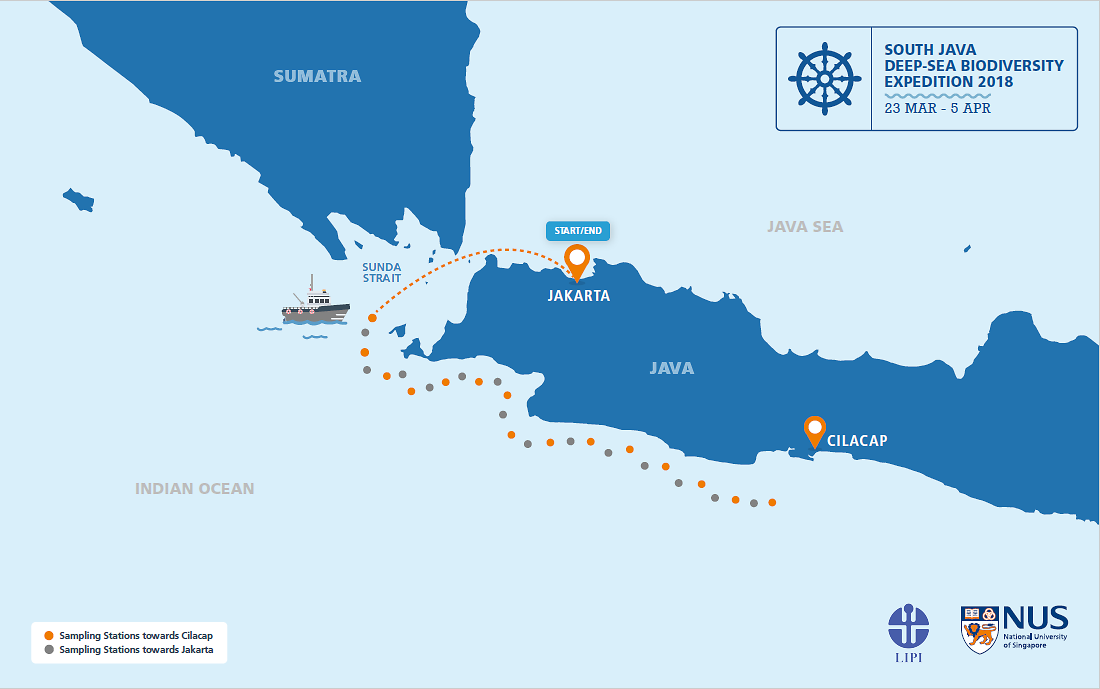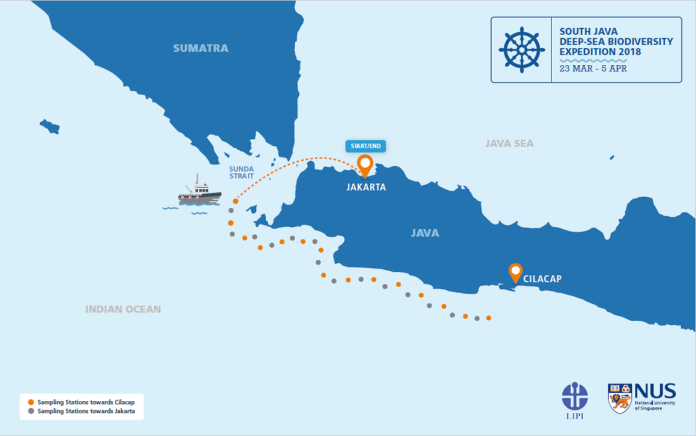SINGAPORE: It’s not quite 20,000 Leagues Under the Sea, but close.
A team of Singapore and Indonesia scientists are venturing into the deep unknown of the West Java sea, where their goal is to uncover the vast array of marine life that, till now, has been unexplored.
This first-of-its-kind 14-day expedition from Friday (Mar 23) till Apr 5 takes place on board the Indonesian research vessel Baruna Jaya VIII, which will carry a team of 30 researchers and support staff from the National University of Singapore (NUS) and the Indonesian Institute of Sciences.
The vessel will depart from Muara Baru, Jakarta in Indonesia, where the scientists will spend the next two weeks working in the vicinity of the Sunda Strait Trough off Cilacap, digging deep into the dredges to take samples from the seabed.
Based on the team’s experience, the depth of 500m to 2,000m usually displays the greatest diversity with the most interesting species, but the scientists also have a particular wish list they hope to document, ranging from crabs and prawns, shells, fish, urchins and even worms.
Each day, the research team plans to conduct sampling at three to four sites, covering a total of 29 sites. Each sampling exercise will take at least three to four hours to complete due to the depths involved and the time it takes to deploy the equipment.
Important biological samples will be sorted, photographed, preserved and labelled on board the research vessel. Some will even be kept alive for short periods in special, chilled aquariums so that they can be observed, studied and filmed.
Head of the NUS’ Lee Kong Chian Natural History Museum and one of the expedition leaders, Professor Peter Ng, said there is a wealth of biodiversity waiting to be uncovered.
“People always forget that the deep sea holds a huge number of different species of animals, many of them new to science, that we don’t even know they are there,” he said. “So I think it’s important to find out what are the kinds of animals living there, what are the species there, and this increase of knowledge will be very good as far as the conservation, use of resources in the future is concerned.”

Prof Ng also recounted past expeditions, which had “unearthed bizarre Darth Vader-like sea cockroaches, bloated oil-filled fishes with poorly developed eyes, eerie wraith-like crabs as well as spectacularly-coloured lobsters.”
Dr Dwi Listyo Rahayu, who is the chief scientist for the Indonesian team, said: “This deep-sea expedition will reveal the diversity of demersal organisms on the southwestern part of Java Island, the area where almost no exploration has ever been conducted. It will certainly incite a strong maritime spirit among young Indonesian scientists participating in the expedition to go forth and seek the many interesting animals that live in the deep waters of their country.”
The expedition is also significant because it has been 15 years in the making, and is the first time Singapore and Indonesia are teaming up on such a large-scale quest. Prof Ng said an immense amount of preparation and forward planning has taken place.
“So typically, we will plan for logistics, what we need. To feed 30 scientists on board, not counting the crew, the water, the equipment they need, the photographic equipment, and out at sea, you cannot replenish your supplies, you cannot just call somebody and somebody delivers, no such thing,” he said.
“You plan for worst case scenario, medical accidents, what do you do? So a lot of planning has to take place when you do a deep sea expedition out in open sea to ensure the risks are the minimum, the science can be maximised, and the results are useful for scientists to come.”
At the end of the expedition, the samples collected will be studied by scientists from both countries. This is anticipated to take up to two years, and the results will be shared and discussed with the world at a workshop to be held in Indonesia in 2020.
The output will then be collated and published in the Museum’s science-citation journal, The Raffles Bulletin of Zoology.





